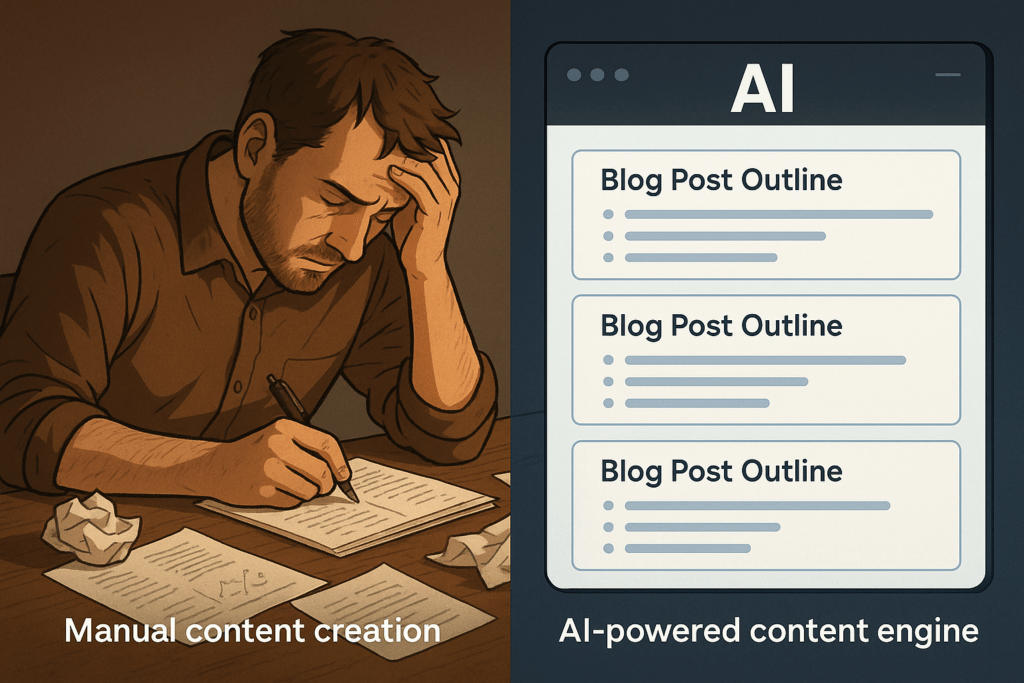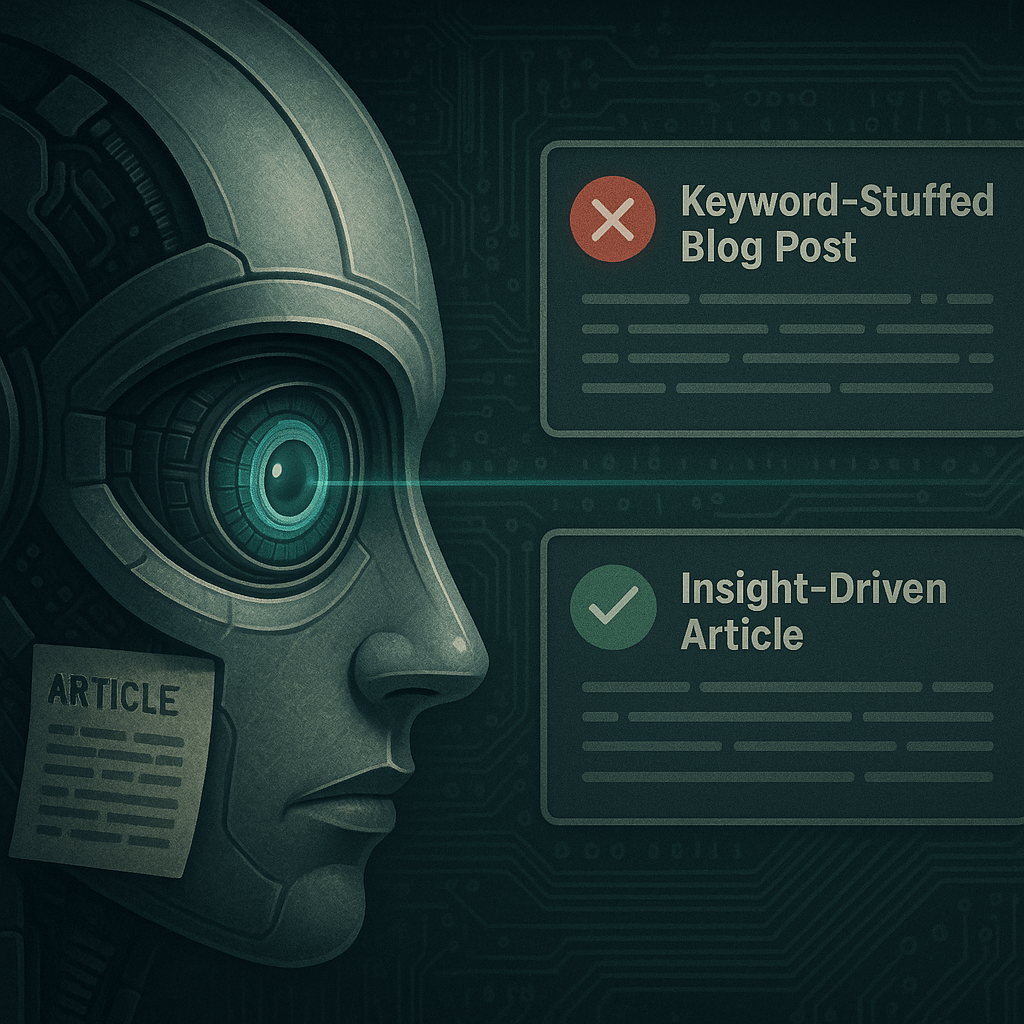Why Top Brands Dominate While Others Struggle to Scale
The best content marketing brands have already solved the equation that countless companies struggle to decipher. They don’t just produce content; they build self-perpetuating story ecosystems, designed to magnetize audiences, establish trust, and scale influence without friction. Yet, for the vast majority of businesses attempting to replicate their success, the process remains distant, elusive—almost mythological. Why do some brands ascend effortlessly while others remain stagnant, despite equal access to technology, talent, and resources?
The answer begins with a critical distinction: brands that dominate have abandoned transactional content in favor of transformation. They don’t merely push out words—they create gravitational narratives that pull in prospects, build emotional resonance, and position their companies as authorities long before a purchase decision is even considered. The failure of most content marketing strategies is not in their execution, but in their framing—treating content as a product when, in reality, it’s the architecture of influence.
Consider the evolution of content marketing. A decade ago, blogging was sufficient to generate traffic. Then came video, social media, and the rise of search algorithms prioritizing expertise and trustworthiness. Today, the competition for attention is relentless, and brands investing in traditional strategies find themselves running faster, yet falling behind. SEO alone is no longer enough. Even high-quality content fails if it lacks depth, strategy, and a fundamental understanding of audience psychology.
Take, for instance, the SaaS sector—one of the most content-saturated industries in the digital landscape. Companies pour millions into creating blogs, guides, and email sequences, yet face staggering churn rates. Their content is seen, read, and even ranked—but it doesn’t convert loyalty. Why? Because most companies focus on volume rather than velocity, failing to build the type of narrative density that fosters continued engagement. The best content marketing brands don’t just attract traffic; they create lasting momentum.
Algorithms change. Platforms shift. But one principle remains constant: attention follows authority. The most effective brands understand that content is not just an acquisition tool—it’s a leadership platform. They learn audience intent at a psychological level. They analyze data not to chase trends but to define them. They don’t simply promote; they create movements.
The current landscape reveals a harsh truth—content saturation is killing traditional marketing. A brand can publish five, ten, or even thirty articles per week, optimizing headlines, tweaking keywords, and following best practices, yet never break through the noise. The difference isn’t in quantity; it’s in the ability to engineer narratives that create compounding returns.
To transition from content creation to content domination, businesses must rethink their approach. Static, one-dimensional strategies are obsolete. The most effective brands realize that content exists in a universe, not a vacuum—it must be layered, automated, and strategically interconnected. Every blog, video, and email must serve as a piece of a broader narrative, guiding audiences through a scalable ecosystem that nurtures, persuades, and ultimately converts.
The foundation of this shift is clear: quality alone isn’t sufficient. The best content marketing brands do more than produce excellent content—they create frameworks that amplify authority over time. The question is no longer whether a company should invest in content marketing; it’s whether they are ready to harness it as a force multiplier instead of a budgetary line item.
The brands that embrace this future will not just thrive—they will define the next era of digital expansion and influence.
The Hidden Mechanisms Driving Authority Growth
The best content marketing brands do not rise to dominance by accident. Their influence isn’t built on sporadic viral moments or short-lived campaigns. Instead, they operate with a relentless precision—creating content ecosystems that don’t just engage audiences in the moment but pull them back, again and again, into a loop of trust and expertise. They are not in the business of chasing numbers; they are in the business of positioning themselves as indispensable.
This is where most businesses falter. Many companies believe that content success is a matter of producing high-quality work and distributing it effectively. While both are necessary, they are insufficient. Authority is not simply a matter of visibility; it is a function of strategic immersion—drawing audiences into prolonged, repeated engagement where the brand’s presence becomes not just an option, but a necessity.
The Compounding Effect of Strategic Content Ecosystems
The brands that dominate content marketing have mastered the art of continuity. They operate within an ecosystem, meaning every piece of content is not a stand-alone asset but a node in a vast interlinked structure, designed to retain and direct attention fluidly. Consider how search algorithms prioritize websites that demonstrate topical mastery rather than isolated keyword wins. Companies that build interconnected resources—guides, blogs, videos, newsletters—don’t just attract traffic; they capture mindshare.
The methodology behind this is precise. Leading content-driven brands develop an infrastructure that allows audiences to learn, engage, and return without friction. Whether through long-form analysis, interactive experiences, or serialized insights, they ensure that each visit deepens the connection rather than satisfying momentary curiosity. They turn passive readers into habitual participants.
Yet, achieving this level of authority isn’t simply a matter of volume. It demands a deliberate architecture—one where every blog, email, search-optimized article, and downloadable report acts as an interconnected pathway, not an endpoint.
Why Transactional Content Fails to Sustain Authority
Businesses operating with a one-dimensional content strategy often mistake early traction for lasting influence. They experience initial spikes in traffic—perhaps through social promotion or a successful campaign—but soon, engagement flattens. The root cause? A failure to move beyond transactional content.
Transactional content is designed to serve a singular purpose: attract attention, convert readers, or answer an immediate query. It is functional but fleeting. While effective for short-term conversions, this approach neglects the infrastructure required for lasting influence. Without a connected narrative, the brand remains forgettable—a momentary stop, not a long-term authority.
The best content marketing brands have eliminated this pitfall. Their strategy is predicated on relationship-building rather than mere information delivery. Their content does not simply serve a function—it establishes an expectation. Audiences begin to anticipate rather than react. When this shift occurs, a brand is no longer just another voice competing for attention—it becomes the preferred voice in its space.
The Power of Storytelling in Sustained Brand Growth
The psychological mechanics behind authority are clear—people remember and trust the sources that influence their perspectives over time. The brands that thrive in content marketing employ storytelling not just as a tool for engagement, but as a structural necessity. They weave narrative-driven frameworks into their blogs, videos, and emails, ensuring that their insights are consumed with an emotional and intellectual imprint that endures.
Consider how media platforms, industry leaders, and renowned companies embed their messages into the cultural conversation. They don’t simply create content; they create movements. Their work doesn’t feel like a series of disconnected topics—it feels like a journey, consistently reinforcing a core philosophy that their audience learns to align with.
Companies that fail to leverage storytelling in this way struggle to remain relevant. Content marketing is no longer about producing work that is seen; it is about embedding narratives into the minds of audiences so seamlessly that the brand’s presence is continuous, not episodic.
Engineering a Content Engine That Grows Without Limits
The ultimate differentiator between brands that stagnate and those that achieve exponential growth lies in their ability to scale intelligently. The top-performing content marketing brands do not rely on arbitrary production schedules or guessing which topics will work. They employ AI-driven analytics, market research, and predictive insights to anticipate audience needs before they surface.
These businesses understand that waiting to react to trends is a losing strategy. Instead, they operate proactively—engineering content frameworks that serve audiences at every stage of the decision-making process. Their approach isn’t just about capturing search traffic; it’s about creating a gravitational pull so powerful that competitors struggle to keep up.
For companies looking to build enduring influence, the lesson is clear: content must not be an isolated function of the business—it must be the foundation of how brand authority compounds over time.
The Power of Self-Sustaining Content Ecosystems
The best content marketing brands do not operate on borrowed attention. Instead, they establish a gravitational pull—a force so strong that audiences, prospects, and even competitors revolve around their content. Their secret? Building ecosystems that perpetuate themselves, where each blog, video, and guide compounds in influence, attracting new customers while fortifying loyalty.
This ability to scale without dilution is no accident. It is the product of strategic engineering. These brands understand that content should not merely inform—it must create pathways. A well-constructed content strategy guides readers from curiosity to conversion, then from customers to evangelists. A single viral topic isn’t the goal; rather, the objective is sustainable momentum, where every piece of media feeds the next stage of engagement.
How the Best Brands Engineer Market Dominance
Many businesses approach content marketing with isolated tactics—publishing blog posts sporadically, launching social campaigns that quickly fade, or investing in videos that fail to generate long-term traction. In contrast, the best content marketing brands operate like architects, laying foundations for compound growth.
First, they research and identify untapped audience needs, finding content gaps competitors have overlooked. Then, they create frameworks that ensure each insight builds upon the last. Whether through an interconnected series of guides, pillar-based SEO structures, or meticulously designed multimedia funnels, their content strategies are constructed to maximize engagement. The focus is not on singular success but on developing influence that deepens over time.
Moreover, they understand that content is not just about volume—it’s about experience. The most effective marketing brands create immersive educational hubs, blending expert analysis, interactive content, and personalized touchpoints. The result? Readers don’t just consume content; they join a knowledge ecosystem, returning repeatedly as customers and thought partners.
The Role of Authority, Trust, and SEO in Content Longevity
For content ecosystems to remain powerful, they must meet stringent standards of Experience, Expertise, Authority, and Trust (E-E-A-T). Search engines have evolved, prioritizing deep knowledge and authentic human insight over mass-produced articles. The best content marketing brands understand this shift and ensure that their platforms reflect genuine expertise rather than AI-generated redundancy.
What does this look like in practice? It means combining research-backed insights with real-world examples, multimedia storytelling, and value-driven engagement strategies. Brands that rise to the top don’t just publish keywords—they engineer trust through deeply relevant, high-quality content that withstands algorithm changes and industry shifts.
The key to SEO isn’t mere rankings—it’s authority compounding over time. The best brands don’t chase trends; they shape them. Their content is shared across communities, referenced in industry discussions, and trusted by decision-makers. This influence extends beyond search engines, resulting in organic amplification through word-of-mouth, partnerships, and high-authority backlinks.
Why Smart Content Strategy Creates an Unstoppable Growth Loop
Unlike transactional marketing efforts that rely on constant paid promotion, top-tier content marketing creates self-perpetuating loops. When executed correctly, content assets continue performing, driving traffic, engagement, and conversions long after they are published. This effect occurs because of a finely tuned combination of search visibility, brand recognition, and community participation.
Consider how the best brands utilize content repurposing. A single piece of high-performing media—whether a well-researched report, a groundbreaking video, or an informative guide—is never left stagnant. It is reshaped, expanded, and reformatted into podcasts, infographics, newsletters, and event discussions, ensuring that one piece of content fuels multiple engagement points.
The key lesson? The best content marketing brands don’t just create—they optimize relentlessly. Each piece of content is a living asset, continually refined through audience feedback, performance analysis, and strategic distribution. Content is not posted and forgotten; it is built to rise in influence over time, ensuring that audience reach and brand dominance scale indefinitely.
As businesses seek to establish a lasting digital presence, the focus should not be on short-term content bursts but on constructing a legacy of strategic influence. The best brands accomplish this by engineering marketing ecosystems where every word, video, and interaction intensifies their position in the marketplace.
The Hidden Infrastructure Behind the Best Content Marketing Brands
The best content marketing brands aren’t chasing visibility—they’re building empires of influence. What sets them apart isn’t just a steady stream of blog posts or social media updates; it’s the strategic architecture behind their content. Every piece they create is part of a larger ecosystem—an interconnected network designed to engage, educate, and convert their audiences at scale.
Unlike companies that rely on short-term marketing tactics, these brands build content machines that continue to deliver value long after publication. They structure their content library like a world-class media operation, developing cornerstone content that holds long-lasting relevance, supplementing it with timely updates, and repurposing insights into multiple formats—including email campaigns, videos, and interactive guides. Their success isn’t random; it’s the product of meticulous planning and continuous optimization.
Why Authority-Led Content Wins in the Attention Economy
For businesses trying to scale in a saturated market, the key challenge isn’t just attracting visitors—it’s maintaining authority. Content is no longer about simply ranking on search engines; it’s about creating long-term trust and industry authority. The best marketing brands don’t just publish—they educate, challenge assumptions, and lead conversations in their industries.
Marketers who study these brands will notice a common pattern: a shift from transactional content toward transformational content. While many companies still create content to promote products, dominant brands create content that changes how their audiences think. Instead of just answering surface-level questions, they provide deep insights, case studies, and expert opinions that define industry standards.
The impact of this approach is clear: content from these brands naturally generates backlinks, earns media mentions, and attracts organic engagement. Most importantly, it builds trust—an irreplaceable asset in the digital age.
Content Distribution as a Competitive Advantage
Even the highest-quality content fails if it doesn’t reach the right audience. The best brands understand that distribution is just as important as creation. These companies don’t rely solely on search traffic; they cultivate owned channels, develop partnerships, and use advanced targeting to amplify their messages.
One powerful strategy they implement is multi-channel repurposing. A single blog post can evolve into a podcast discussion, a short video series, a detailed whitepaper, and a social media thread. By presenting information in multiple formats, they expand their reach, meeting audiences where they spend the most time.
Email remains a cornerstone of this strategy as well. Industry leaders don’t just use email to announce new posts; they develop segmented sequences that nurture their audience over time. Personalized campaigns ensure prospects stay engaged, making them more likely to convert when the time is right.
The Role of AI in Scaling Authority
As content creation evolves, AI-powered systems are no longer just supporting publishing—they’re defining how brands scale authority. While many companies use AI to produce basic blog posts, elite brands leverage AI to map audience engagement, analyze trending topics, and refine content strategy dynamically.
By integrating AI into their workflow, these brands eliminate guesswork. They identify underperforming content swiftly, adjust their approach in real time, and focus their efforts on high-impact areas. Strategic automation allows them to maintain consistency without sacrificing quality, giving them an unmatched competitive edge.
The lesson is clear: brands that master content marketing don’t just create—they systematize influence. These businesses don’t leave engagement to chance; they build content frameworks that lead audiences through every stage of the buyer’s journey. And as they refine their approach, their market dominance compounds, making them nearly impossible to displace.
The Best Content Marketing Brands Are More Than Publishers—They Are Leaders
The best content marketing brands don’t just create content. They shape conversations, set industry standards, and operate as true thought leaders. While others focus on short-term engagement, these companies build ecosystems where readers, customers, and communities keep returning—not just for information, but for direction.
This is the missing link for most businesses. A well-optimized blog, a strategic SEO plan, and a social media presence are necessary, but they aren’t enough. To become a truly dominant force in content marketing, a business must establish itself as an unquestionable authority—one that its audience automatically turns to when looking for answers, insights, and solutions.
Why Most Content Strategies Fail to Create Influence
Many businesses start strong but falter when it comes to sustaining engagement. Their blog posts generate traffic, their videos get shared, and their email campaigns show promising results—momentarily. But over time, the excitement fades, engagement drops, and what seemed like a successful strategy proves to be just another short-lived tactic.
Why? Because these businesses never established an authoritative presence. They created content, but they never became the source. The best content marketing brands don’t just participate in discussions; they drive them. They don’t just follow trends; they create them. And most businesses never take this final, crucial step.
Content Alone Doesn’t Build Authority—Leadership Does
To understand how the best content marketing brands reach unparalleled influence, it’s critical to dissect what separates them from the rest. Their success isn’t built on the volume of content they produce but on their ability to shape industry perspectives. Every blog post, every guide, every video isn’t just informative—it establishes a unique vantage point. It provides insight competitors can’t replicate and creates a gravitational pull that draws audiences deeper into the brand’s ecosystem.
Take, for example, companies that have successfully built lasting authority. Their content doesn’t blend into the endless sea of search results—it stands out as the definitive answer. Their readers don’t just passively consume; they engage, share, and apply the insights. These brands don’t chase traffic; they attract dedicated followers who return time and time again.
The Secret to Sustained Brand Influence
The most effective content marketing brands don’t just focus on keywords or algorithms—they focus on their audience’s long-term trust. They engage prospects by providing something no one else does: a perspective that elevates their brand into a position of leadership.
To achieve this, a business must rethink its approach. Rather than viewing content as a series of isolated campaigns, it must develop a content framework that builds authority over time. This means consistently publishing insights that challenge conventional thinking, introducing new ideas, and demonstrating thought leadership in ways competitors can’t match.
This strategic shift doesn’t just increase search visibility—it cements a brand’s position as the undisputed leader in its space. People don’t just find the content; they rely on it, trust it, and ultimately, follow it.
The Brands That Lead Are the Brands That Win
The difference between content marketing that scales and content marketing that fades is simple: leadership. The best content marketing brands don’t chase short-term metrics; they build legacies. They don’t fight for attention; they command it.
For businesses looking to elevate their strategy, the question isn’t just how to create more content—it’s how to create lasting influence. The brands that take this step don’t just attract more leads; they build industry-defining authority, ensuring that their audience doesn’t just visit once—but returns for years to come.













